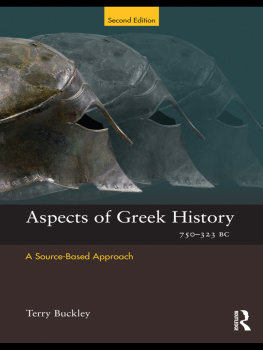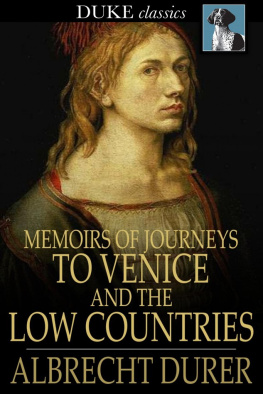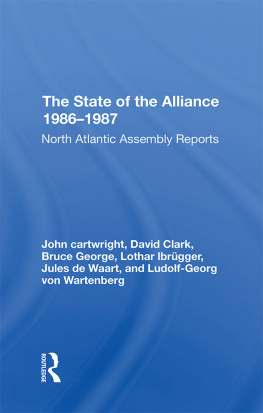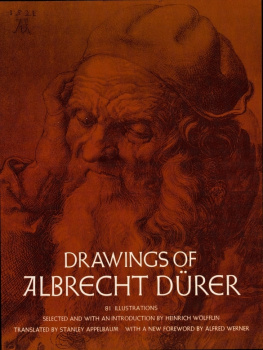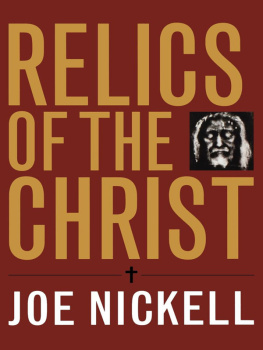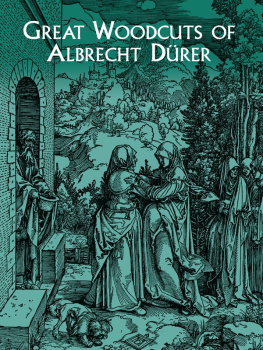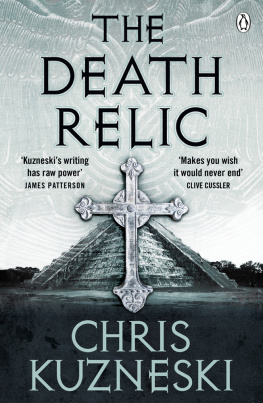Thank you for downloading this Simon & Schuster eBook.
Join our mailing list and get updates on new releases, deals, bonus content and other great books from Simon & Schuster.
C LICK H ERE T O S IGN U P
or visit us online to sign up at
eBookNews.SimonandSchuster.com
We hope you enjoyed reading this Simon & Schuster eBook.
Join our mailing list and get updates on new releases, deals, bonus content and other great books from Simon & Schuster.
C LICK H ERE T O S IGN U P
or visit us online to sign up at
eBookNews.SimonandSchuster.com
For Anne Springs Close, with love
If even a dogs tooth is truly worshipped it glows with light. The venerated object is endowed with power...
Iris Murdoch, The Sea, the Sea
In our corrupt times, the virtue of a Pontiff is commended when he does not surpass the wickedness of other men.
Francesco Guicciardini, History of Italy , 1561
Contents
Rome, 2017
BURIAL CLOTH FOUND IN TOMB OF 16TH-CENTURY POPE IS SAID TO BE IDENTICAL TO SHROUD OF TURIN
Vatican City, August 28Workers doing repairs on the tomb of Pope Leo X in Romes Basilica Church of Santa Maria sopra Minerva have found a cloth closely resembling the Shroud of Turin, the relic held by many to be the burial shroud of Jesus Christ.
The discovery occurred two weeks ago. Until now, the Vatican has withheld making any announcement or comment, prompting heated speculation. Word of the finding began to leak almost immediately, and the normally quiet Santa Maria has been overwhelmed by mobs of pilgrims and curiosity seekers.
According to a source within the Vatican who requested anonymity, the discovery is extremely problematical. In addition to the shrouds remarkable resemblance to that of Turin, the source said, There is the questionwhat was it doing in Leos tomb?
Leo X, a member of the de Medici family, died in 1521. He ruled as pontiff during the Protestant Reformation, and was described by one 20th-century scholar as being as elegant and as indolent as a Persian cat. He is not held in esteem by the Church, owing to rampant corruption and decadence. His mishandling of Martin Luthers protest over the Churchs sale of indulgences led to the Reformation, plunging Europe into a century and a half of religious warfare.
Pope Francis is said to have expressed consternation over the discovery of another shroud in his predecessors crypt. The Church had always maintained a nuanced stance toward its most famous holy relic, neither asserting nor disclaiming its authenticity.
In 1988, after carbon-14 testing dated the Turin Shroud to between AD 1260 and 1390, the Vatican formally declared it to be a forgery. At the same time, the Church declared that the Shroud remained worthy of continued veneration as an icon, and has certified numerous healing miracles attributed to it.
Many Christians remain convinced that the Turin Shroud is authentic, and insist that the carbon-14 testing was flawed. The discovery of what appears to be a nearly identical shroud could prove to be as problematical for them as it is for the Church.
The Vaticans Congregation for the Causes of Saints, the office within the Roman Curia responsible for the verification and preservation of holy relics, today announced that it has appointed Monsignor Silvestre Prang, S.J., to undertake a thorough and rigorous scientific investigation of the so-called Leo Shroud.
Prang, a Jesuit, holds a PhD in cellular and molecular physiology from Yale University. The Vatican declined to make him available for comment until his report is made public next year.
Part One
1
Basel, 1517
D ismas might have purchased the finger bone of the Apostle Thomas, but there was something not quite right about the man offering it for sale.
For one, his asking price was far too low. A relic of the finger that had probed the spear wound in Christs side after his resurrection would fetch as much as forty or fifty gulden. And he was asking only fifteen. More troubling was the absence of fragrant odor when Dismas held it to his nostrils. A genuine relic was always pleasant to the nose. Finally, there was the variety of items the fellow had for sale: the tongue (entire) of St. Anthony of Padua; an ampulla of the Virgins breast milk; a stone from the scala santa , the steps of Pilates palace; a few pieces of straw from the sacra incunabulum , the holy manger in Bethlehem; and shavings from the chains of St. Peter. A suspiciously vast array of goods.
Experience inclined Dismas to trust more in dealers who concentrated in specific fields. Say, relics of the Diocletian persecution. Or brandea , items that had been in physical contact with the Holy Family. Relics of St. Anne, mother of the Virgin, a category at the moment in huge demand.
Most revealing of all: when Dismas thanked the man and turned to leave, he immediately lowered the price to five gulden. One saw more and more of this disgraceful behavior these days at the Basel Relic Fair.
Dismas stood in the market square in front of the new town hall with its marvelous polychrome arcades. His glance swept over the expanse, humming with commerce. There must be over three hundred exhibitors.
He noted with amusement two adjoining booths, each advertising thorns from the Crown of Thorns. Unfortunate placement. But there were so many exhibitors these days. Space was tight. Placards and banners flapped in the late afternoon breeze. One advertised a Mandylion, another a sudarium, another a foot (whole) of the Magdalene. There was always a surcharge for an entire appendage.
On the north side of the square, by the fish market, appropriately enough, was this years most-talked-about piece: an entire boat avouched to have belonged to St. Peter in his pre-apostolic Galilean fishing days.
Owing to his status in the relic community, Dismas had been given a preview. The asking price, three thousand gulden, was preposterous, even if it were authentic, which Dismas highly doubted. To the consternation of its seller, Dismas crawled underneath with a magnifying glass. There he found wormholes of the type made by saltwater worms.
Dusting himself off, he gave the fellow a look of rebuke. Odd, wasnt itsaltwater worm damage, in a freshwater fishing vessel?
The dealer cleared his throat and said, well, see, the boat had been briefly anchored in the Mediterranean, at Joppa, before, er, being taken aboard ship for Marseille.
Um. Well, thanks for letting me have a look.
A shame, Dismas thought, for what a splendid centerpiece it would make in the courtyard of the castle church in Wittenberg. Or the cathedral cloister at Mainz. Someone would buy it, perhaps a recently ennobled Bohemian, whod paint it in garish colors and put it in his moat. In time hed grow bored of it and allow his children to reenact famous sea battles in it. And finally it would rot and sink, and the nobleman would say that hed always had his doubts about it.
More and more, these days, there was an emphasis on size. Last year, the English dealer Arnulfus of Tewksbury had brought to Basel three whole mummified camels. These, he averred, were the very ones that had carried the magi to Bethlehem, bringing gifts of gold, frankincense, and myrrh. Dismas friskily asked Arnulfus why he had not also brought with him the star in the east? Really, it was all getting a bit out of hand.
How many years now had he been coming to the relic fair? His first time was in 1508, sonearly ten, now. Realizing this made him feel old, for embedded in the math was the alas undeniable fact that he was now past thirty years of age.
Next page

